A Guide to E-Bike Locks and Security Ratings
E-bikes are lucrative targets for thieves under just about any circumstances but the Covid-19 propelled boom in cycling and e-bikes has raised their profile – and their second-hand sales market- something that has not gone unnoticed by those who want to get their hands on your e-bike for free by helping themselves to it.
Indeed, as CBS, reports, bike and e-bike theft has spiked during Covid-19. The article tells us that from March 1 to September 21 New Yorkers filed 4,477 complaints related to stolen bicycles, including electric bicycles. That’s up nearly 28%, from 3,507 complaints over the same period a year earlier, according to the New York City Police Department. It’s estimated around 2 million bikes and e-bikes are stolen each year in the US alone.
Over in the UK cycle database BikeRegister has also seen a rise in reported bike thefts, with figures showing 932 thefts reported in August, up 59% on the same month last year. This followed the 900 thefts reported in July, a 51.5% rise compared to 2019, and 786 reported in June, an increase of 48%.
Time then to make sure you have taken every precaution to ensure that your e-bike doesn’t become another statistic.
Use a Good Lock
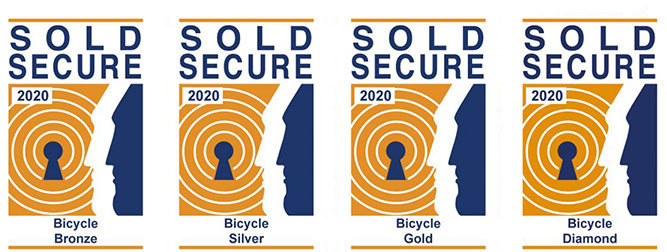
Sounds obvious but there’s a bit more to it than you might think. It’s well known and really just common sense that a bike thief will opt for a target that has a weaker lock than a strong one. If you were a bike thief why would you risk attracting attention by taking unnecessary time to attack a really strong lock when easier targets will be available? To that end make sure your lock has a high-security rating. One of the most popular is the Sold Secure testing system.
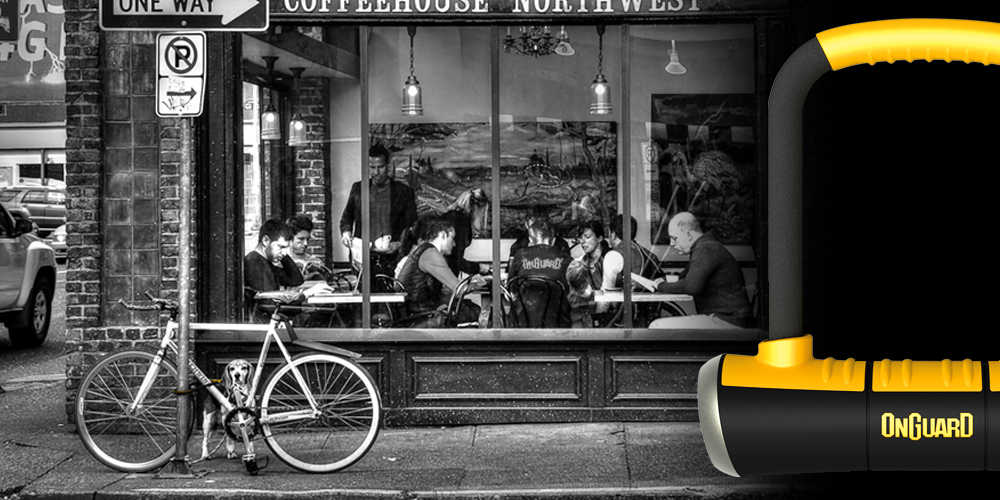
There are now four levels to Sold Secure ratings, Bronze, Silver, Gold and Diamond. The Diamond rating has only just been introduced this last summer and so there aren’t many Diamond rated locks on the market right now. The OnGuard Pitbull and Brute range were one of the first to receive Diamond certification.
Bronze level offers only the most basic defense against opportunist thieves. Silver offers protection for locking and leaving lower value bikes in a low-risk area like a village whilst gold are for mid to high-value bikes and e-bikes in high-risk areas like towns and cities. Diamond are for the highest value e-bikes and motorbikes in high-risk areas. Like any other product there will be very good and much poorer designs of gold rated lock but grading systems like this offer a good starting point in helping you choose the right lock.
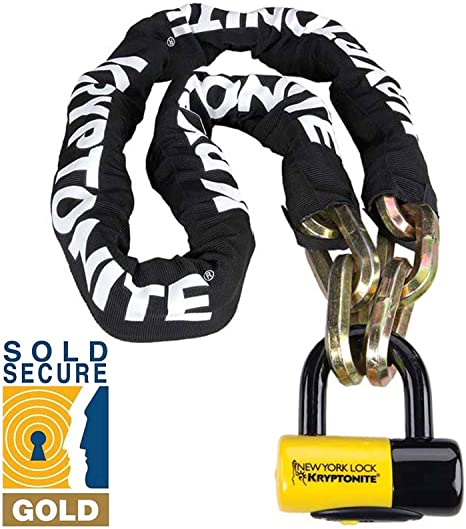
The most securely rated locks are bigger and heavier than lower rated ones
So at least a gold standard lock (or one with the lock company’s equivalent rating) looks a compelling choice and, if you can find a Diamond rated lock that would obviously be more secure yet. The only real downsides are the extra weight and cost of the top-rated locks. Most people value their e-bike enough to make the investment and carry the extra weight. It’s also worth noting that some bike insurers will insist you use a specified level of secure lock, perhaps a Sold Secure gold rated one.
Here is a list of Sold Secure gold rated bike locks. Whatever you decide you should avoid cheap cable style locks and padlocks at all costs as they are so easy to remove they are hardly worth having and just induce a false sense of security in those relying on them.
It’s not just the security of the lock itself that’s important but also it’s ease of use; how easy is it to carry? How easy is it to secure your bike with? This is explored in the next section on different kinds of lock.
ART is another respected independent security rating you may see on locks instead of or alongside the Sold Secure rating and is worth looking out for.
What Design of Lock? Pros and Cons
D-lock / U-lock
D-locks, also known as U-locks, are very popular as they tend to be some of the lightest locks with a high-security rating (especially compared to chain and padlock style locks). They also tend to be competitively priced against other designs of lock and many come with a bracket for fixing to your bike frame for easy carrying.
Their downside is that they can be difficult and occasionally impossible to manhandle around the object you are locking your e-bike to, especially so with the smaller, thicker shackled designs. Having said that note our comments in the ‘Lock in a Safe Place and Lock Safely’ section towards the end of the article about leaving as little space as possible around any lock to deter thieves with tools.
Good examples:
A relatively light option for a high security D-lock. The quality steel shackle is cast in a special, patented shape which it is claimed makes it stronger than some thicker D-lock shackles. Actually marketed as a motorbike lock but still lightweight.
Weight: 1.45kg / 3.2lbs
Internal Shackle dimension: 10.8 x 23 cm / 4.25″ x 9.05″
Price: Circa US$90
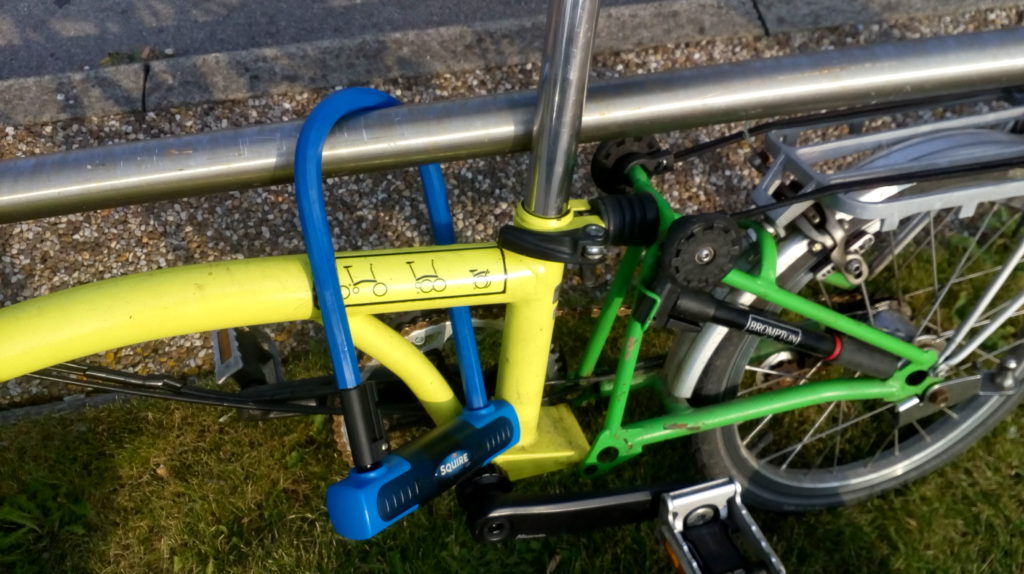
D-locks like Squire’s Eiger are easiest to use when there is plenty of space around the object you are locking your e-bike to, as is the case with this railing
Great value for a high security rated D-lock.
Weight: 1.48kg / 3.25 lbs
Internal Shackle dimension: 10.5 x 23 cm / 4.1″ x 9.05″
Price: Circa £52.42 / US$67
Note there are also cheaper, smaller compact and mini versions if the reduced sized doesn’t present a problem for your bike and its regular parking spots.

OnGuard’s Brute LS has a good long shackle
A long shackle makes this a practical option for a D-lock that should work with a wide variety of e-bike frame designs. Carries OnGuard’s highest security rating, though the obvious penalty is the weight.
Weight: 1.77kg / 3.9lbs
Internal Shackle dimension: 11.1 x 26 cm / 4.4″ x 10.2″
Price: Circa US$79.95
Chain and Padlock
The big win for the chain and padlock approach is its flexibility combined with high security – if you regularly need to lock your bike in awkward spots to whatever street furniture might be available then definitely consider a high security rated chain and padlock approach. The big downside is they are some of the heaviest and priciest locks out there. Gold rated chain locks start with links at 9mm thick (anything thinner and you will be looking at a silver rating or less).
Good examples:
Chain with an integrated key lock. Come in a range of sizes but all gold secure rated. The following video seems to undersell its strength a little but if you want something even stronger note they do a beefier Series 4 version of a similar design.
Weight range: 1.77kg – 3.67kg / 3.9lbs – 8.1 lbs
Length range: 55-150 cm / 21.6″ – 59″
Price range: US$50 – US$124
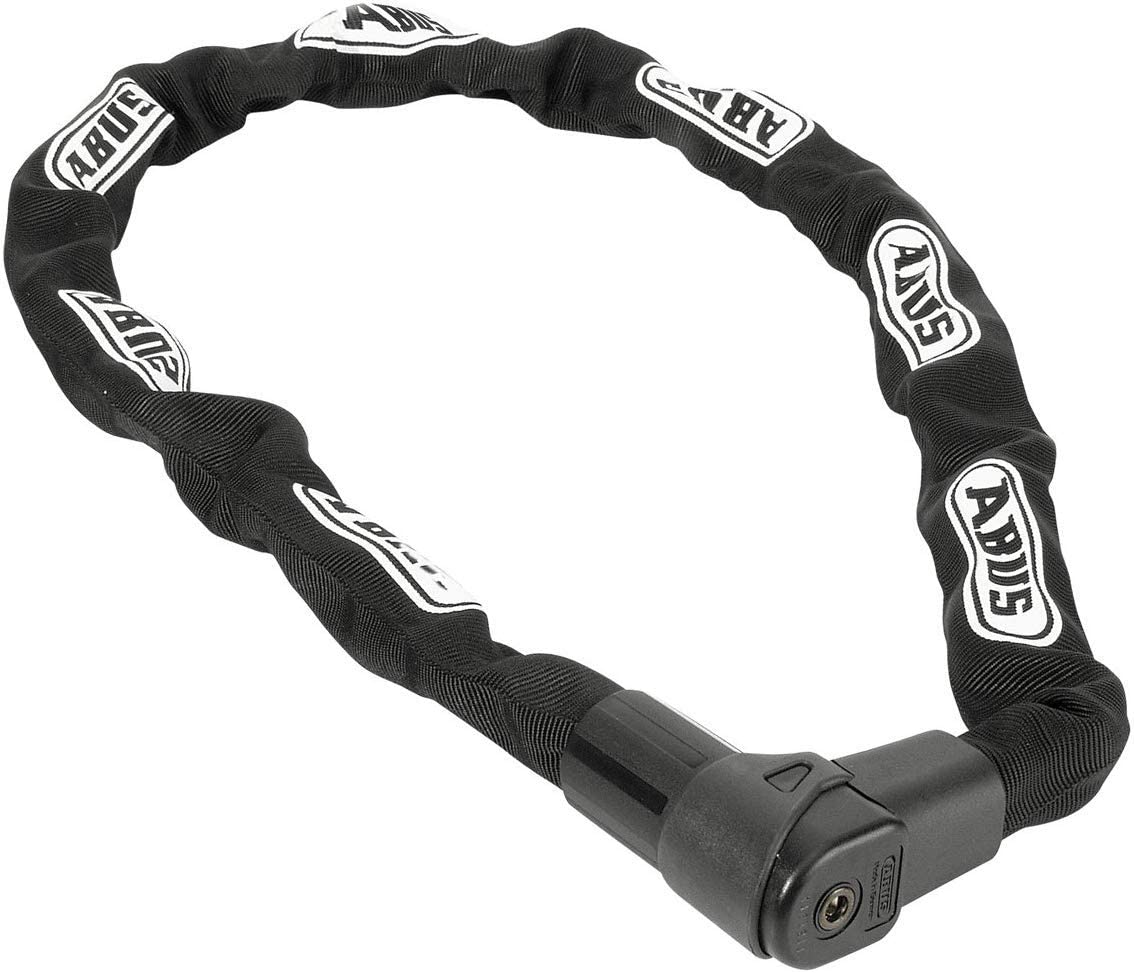
The ABUS Citychain range goes up to an impressive 170cm in length
Weight range: 1.95kg – 3.38kg / 4.3lbs – 7.45lbs
Length range: 85-170 cm / 33.4″ – 66.9″
Price range: US$90 – US$125
Kryptonite Fahgettaboudit Range

Kryptonite’s Fahgettaboudit range is hugely strong and the longest option might let you lock frame and wheels
These 14mm wide link locks get great reviews. Yes of course you can get even bigger chain locks but few e-bikers will want the extra weight. The Fahgettaboudit chain with mini-u-lock gets great reviews and it also gets a gold Sold Secure motorbike rating, which is a step up from the gold Sold Secure bike rating.
Weight range: 4.9kg – 6.92kg / 10.8lbs – 15.2lbs
Length range: 100-150 cm / 39.4″ – 59″
Price range: US$90 – US$125
Folding Locks
One of the newest options but a good alternative to D-locks and of course much lighter than chain locks. Folding locks don’t really give much more ‘locking diameter’ than D-locks they are more flexible because of the rotating joints so they may go around objects that similar size D-locks won’t. Best of all they fold down to a very neat, compact size for transporting off the bike. They are made of steel plates joined by very large, strong rivets. One downside is a limited choice as they are a relatively new technology.
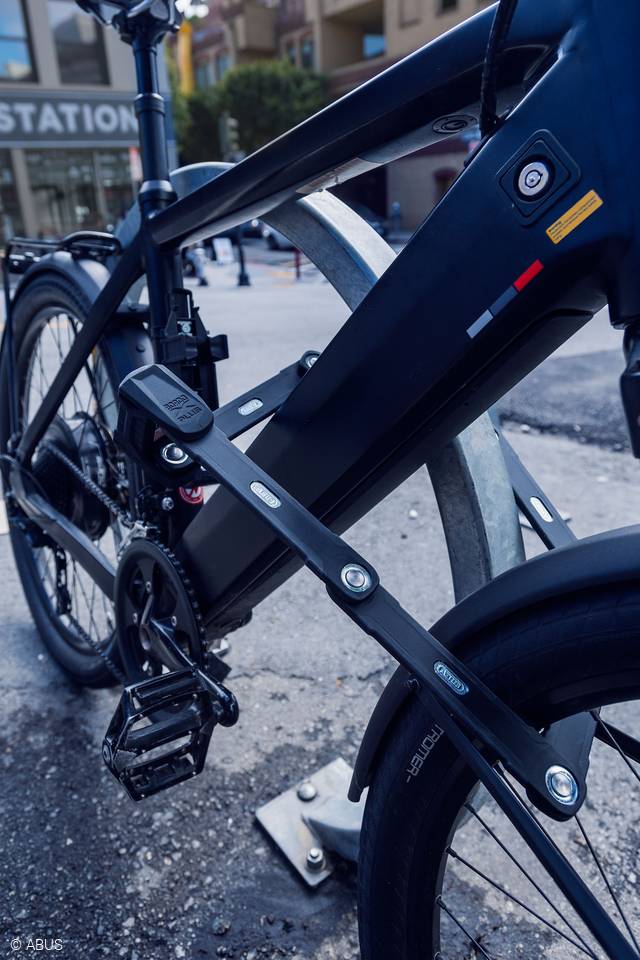
Foldable locks like this ABUS model are flexible to some degree when locking up – a useful feature. It’s one of the few gold rated folding locks.
Weight: 1.76kg-2.16 / 3.9lbs – 4.75lbs
Lengths available: 85cm-110cm / 33.5″ – 43.3″
Price: Circa US$110-US$130
Foldylock Compact
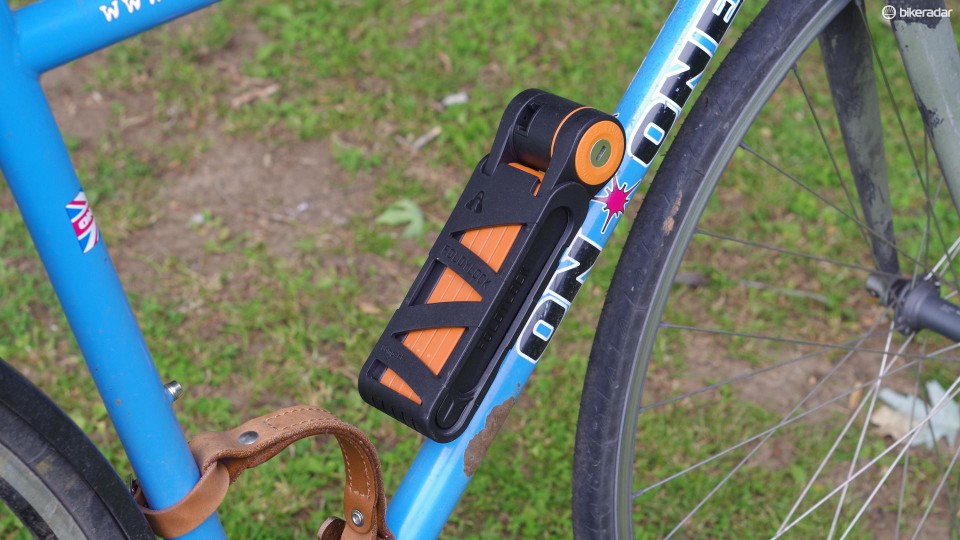
A big plus for folding locks like this Foldylock model is compact storage
Seatylock’s Foldylock Compact has a Sold Secure Silver rating so it’s probably best used as a secondary lock if you have a very expensive e-bike left in a high rish area but it offers good practicality with plenty of locking room and is relatively light.
Weight: 1kg / 2.2lbs
Lengths available: 85cm / 33.5″
Price: Circa US$85
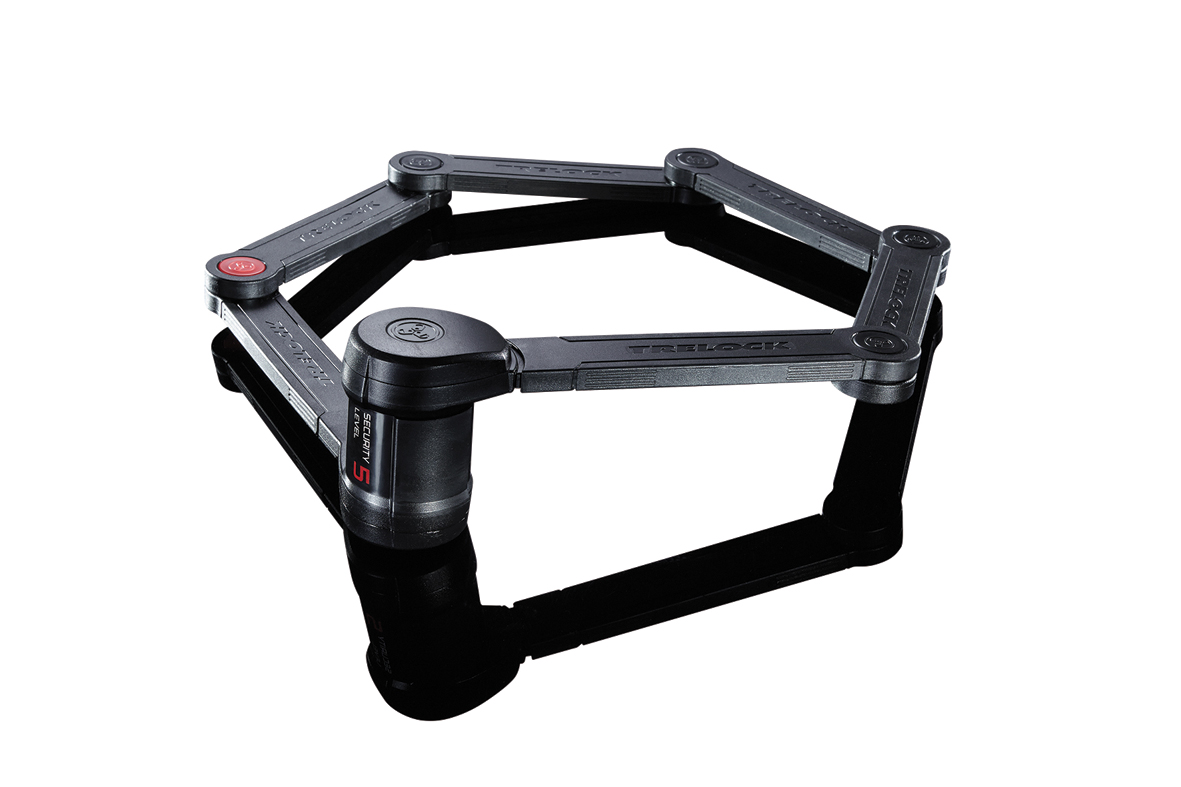
This Trelock folding lock looks a great buy
This model stands out because it’s relatively light and well-priced and gets Trelock’s top security rating.
Weight: 1.45kg / 3.2lbs
Lengths available: 90cm / 35.4″
Price: Circa US$90
Seatylock

Seatylock combines seat and lock so you never forget your lock
This is a folding lock combined into the body of your seat – great as you never forget the lock as it’s always attached to your bike. EBR has reviewed the Seatylock here.
Other Innovative Locks
Wearable Locks
These are a variant of D-locks and chain and padlocks and their use was pioneered by Hiplok. Hiplok realised many bikers don’t always have a bag or panniers (or maybe enough room in them) for carrying a relatively large and heavy high security lock. Their waist-worn chain locks have a great reputation for toughness and whilst pretty heavy they are comfortable around the waist and the weight feels well distributed (though maybe this isn’t the lock for very long rides…).
EBR reviewed the Hiplok Gold Superbright here.
Hiplok’s D-locks use their patented CLIP + RIDE system allowing them to clip to bag straps, belts and pockets.
Want to Go High Tech? Alarmed, Keyless and Gas Emitting Locks
There are a handful of locks that feature alarms. One of the locks that pioneered this area in folding locks is the ABUS Bordo Alarm 6000A lock which we reviewed here.
There are also a small number of alarmed D-locks with a range from Abus but Oxford look to be stealing a march in this area with the Alarm-D Pro 320mm x 173mm ( 12.5″ x 6.8″) with its ear splitting 120 decibel alarm. Note Oxford’s own website shows this as gold rated whilst some resellers have it down as silver rated – check before you buy!
The gold Sold Secure rated Abus 770A SmartX U-Lock is also an electronic (keyless) lock operated from your smartphone. It’s a clever idea to be able to hide better the locking mechanism as lack of a key barrel means one less point of attack.

Does the Squire Inigma herald the start of a new era of keyless locks?
The Squire Inigma bluetooth lock operates in a similar way to the Abus 770A – via your smartphone on a wireless bluetooth link and is also gold Sold Secure rated. It’s early days for this wireless technology so it will be interesting to see if the technology stands up to real-world conditions and if more models are rolled out.
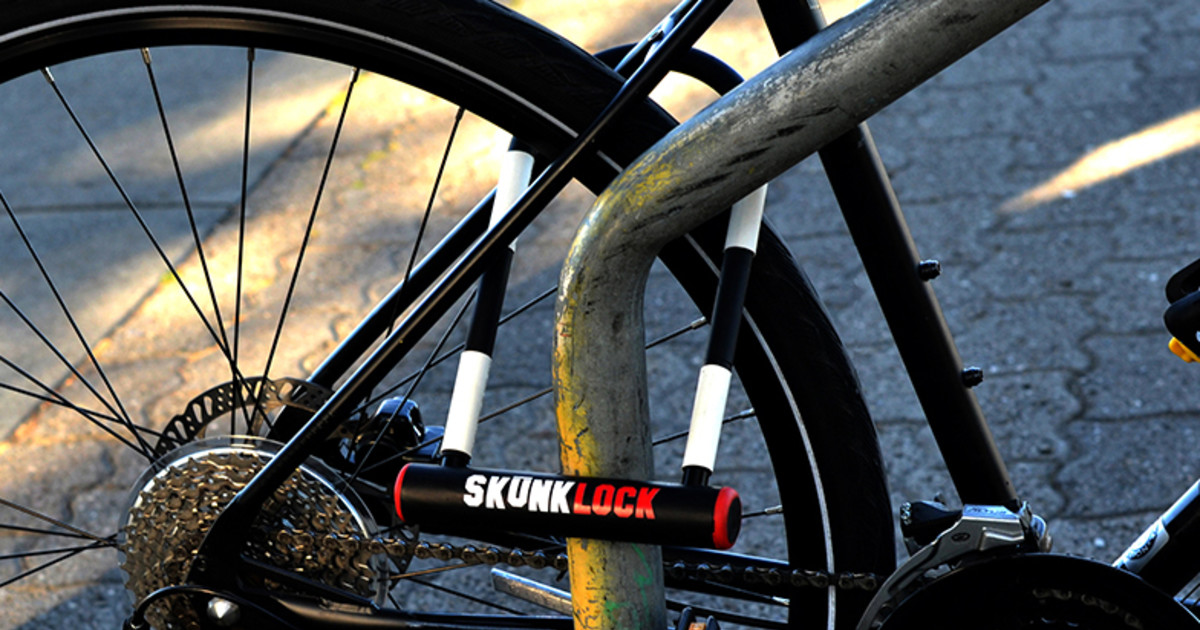
Yes, the Skunklock will emith an extremely bad smell if you break the shackle
Finally another security product that seems to be totally unique, Skunklock. You can probably guess the what this does from the name – as Skunklock’s website says ‘noxious, vomit-inducing chemicals are confined and permanently sealed within a secure hollow chamber throughout the lock. The only way you may expose the chemicals is by trying to cut through it with an angle grinder (even then it wouldn’t be easy).’ Whilst it is not cheap or light nor does it have the highest security rating it is designed to add a secondary level of defense to a specific form of attack (sawing or cutting through the shackle).
Secondary Locks
There are many hundreds of lock designs below the gold Sold Standard (or equivalent) but if you have a pricey e-bike I would only really recommend them as secondary locks. This article calls them secondary locks as they can be useful in combination with top-rated locks – see the ‘Lock in a Safe Place and Lock Safely’ section below for more detail.
A couple of the strongest examples are:

Squire’s Snaplok is handy as it doesn’t need a key
I’ve been using this combination lock for a while now as a secondary lock as it is very strong looking despite only having a silver Sold Secure rating. I like the advantage of not needing a key which makes it particularly quick to get on and off. The narrow shape at one end however can present problems fitting round some parts of a bike frame or some objects. Note that combination locks by inherent design are not as strong as many key locks so variants of the above D-locks and chain locks with combination locking rather than key locking may well have a lower security rating.
Weight: 0.98kg / 2.15lbs
Length: 26cm (21cm also available) / 10.2″
Price: Circa US$90
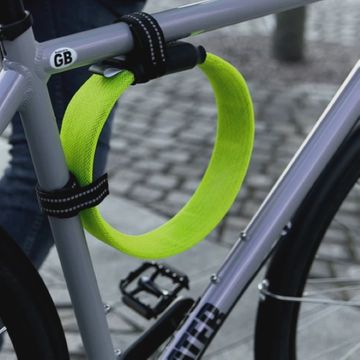
Litelock is both light and flexible
An innovative system that uses a variant of the steel cable construction with various additions from Litelock. Whilst it is Gold rated EBR’s original review was a little skeptical, stating ‘ Personally, if I was to want a lock to use in a really high-risk area where angle-grinder equipped thieves were a possibility I would go for a hardened steel chain with a Gold Sold Secure rating as I believe that would stand up better to such attack than a steel cable-based lock.’
The lock is both flexible along its length and two can be joined together and unfastened with the same key to make a extra long lock.
Weight: 1.1kg / 2.4lbs
Lengths available: 74cm / 29.1″
Price: Circa US$130
eBikes with Built In Electronic Locks and Tracking
A small number of e-bikes have some form of electronic locking built into them. Van Moof launched its S2 and X2 models back in 2018 which both featured a rear wheel invisible electronic lock and this functionality has been upgraded for the S3 and X3 models.
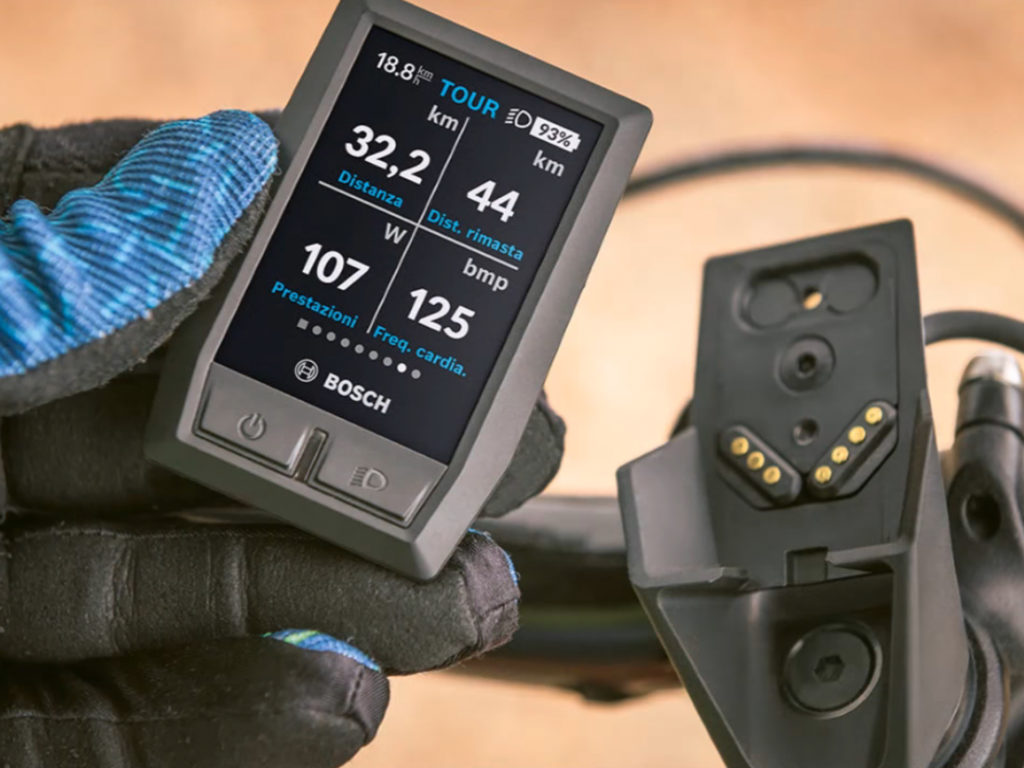
Bosch’s Kiox display can be used to disable the e-bikes motor
The biggest potential though, just in the terms of the number of bikes affected, lies with Bosch’s ‘Lock’ premium function that once activated means the e-bike cannot be ridden with motor support. It that can be used in conjunction with the Kiox and the new Nyon (model year 2021 onwards) displays and is compatible with the Bosch Active Line and Active Line Plus drives from the model year 2018 onwards and with the Performance Line, Cargo Line, Performance Line Speed and Performance Line CX from the model year 2020 onwards.
It should really be noted that these are really secondary lines of defense in that they make the e-bikes potentially less attractive to thieves.
Wheelocks
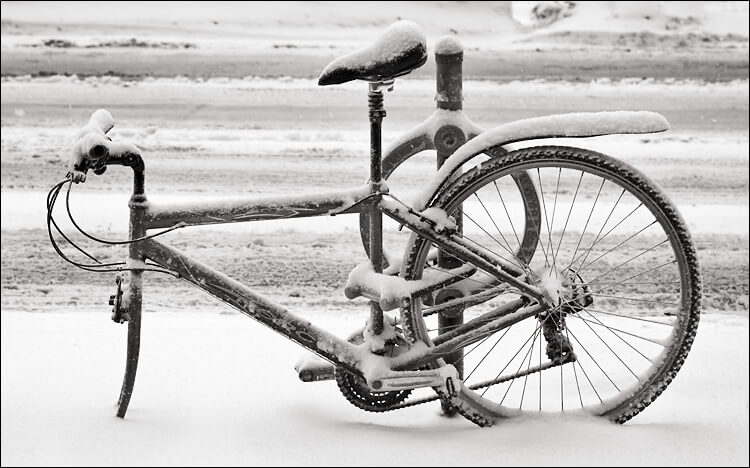
Some thieves will steal anything if it is easy to do so…
Seen bikes with their wheels apparently stolen or bikes that have been locked through the wheels with the rest of the bike stolen? Yes, it happens, especially if they are expensive wheels and easily and quickly removed. Secondary locking as described below can cure this but there are also solutions that secure the axles themselves to prevent such thefts and they use a variety of methods. This avoids the extra inconvenience of carrying extra locking equipment and the extra time needed to lock up your wheels with the extra locking.
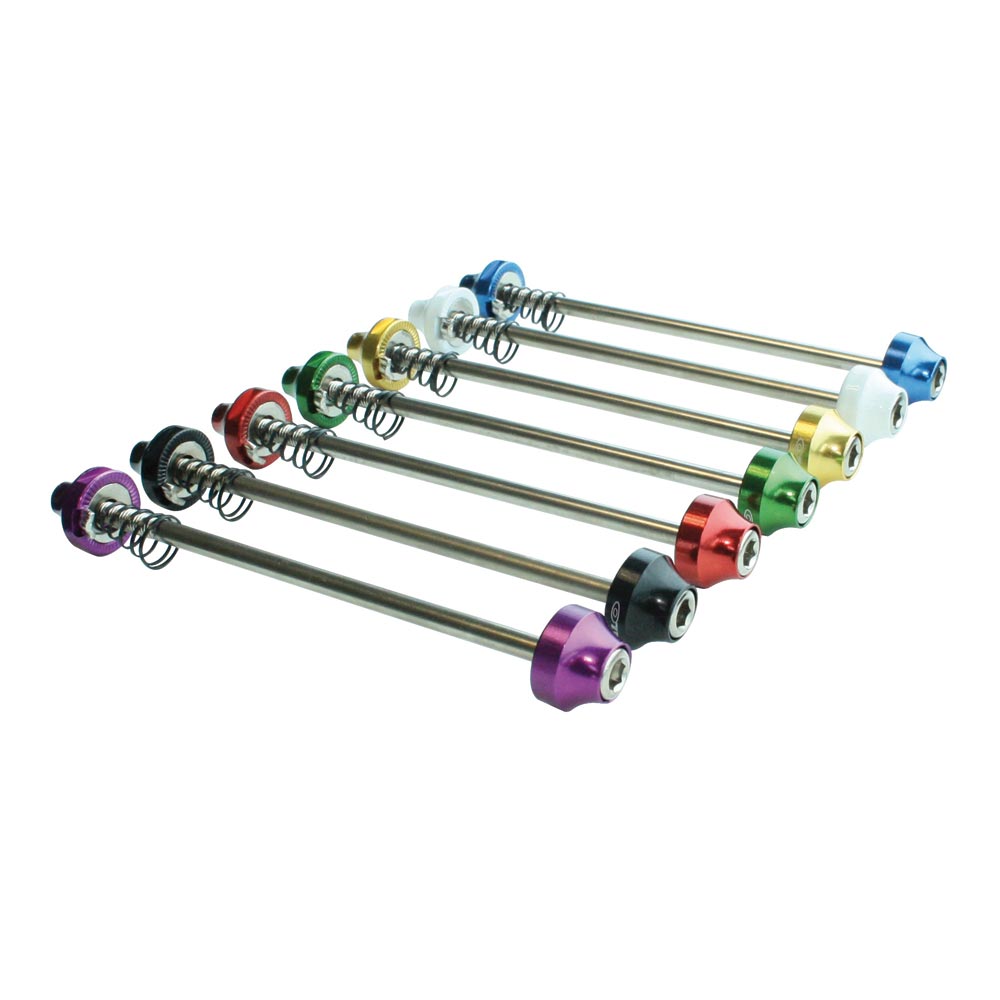
Halo’s hex key skewers are the lowest level of deterrent to wheel theft
The most easily removed wheels use quick-release wheels with the commonest type being quick-release skewers, of which many millions are in use on bikes and e-bikes around the world. They can be swapped out for hex wheel skewers easily, like these colorful options from Halo, meaning you any thief will need to be carrying the right sized hex key get your wheels off.
For higher value wheels in higher risk areas you might want to look at a higher grade, more secure options that can’t be opened with any widely available tool.
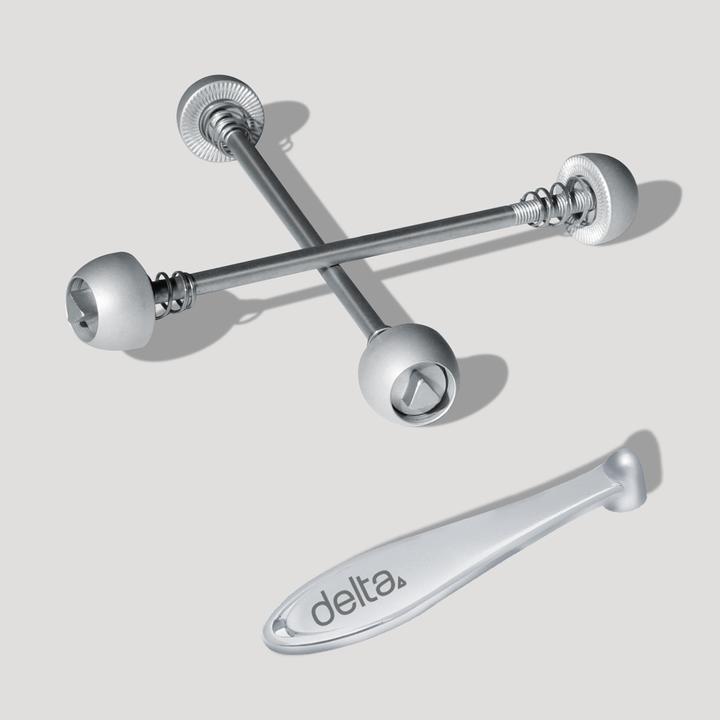
Some wheel quick release security systems use unique key systems like this Hublox system
And the good news is: you can now buy secure versions of the skewers or nuts that a thief won’t be able to open with regular tools. These either use their own unique key system, gravity locking or provide a way of obstructing the hex nut. Manufacturers offering these systems include Pinhead, Hublox and IXOW. It’s also worth noting many of these firms also provide security systems for other components that thieves might want to easily and quickly remove from your bike such as the saddle.
Whilst traditional quick release skewers are the most common type of axle fixing targeted as they are so easy to remove, there are equivalent systems for soild axles with bolts on the end (found on many budget hub motor systems for example) and for the increasingly common thru-axle systems found on e-bikes.
Framelocks are also worth a mention under the heading of secondary locks. They are usually found already fitted to city e-bikes meant for running errands. They quickly let you lock the back wheel in a fixed position so a casual there can’t wheel the bike off. Ideal for nipping into that bakery whilst leaving the bike in view outside.
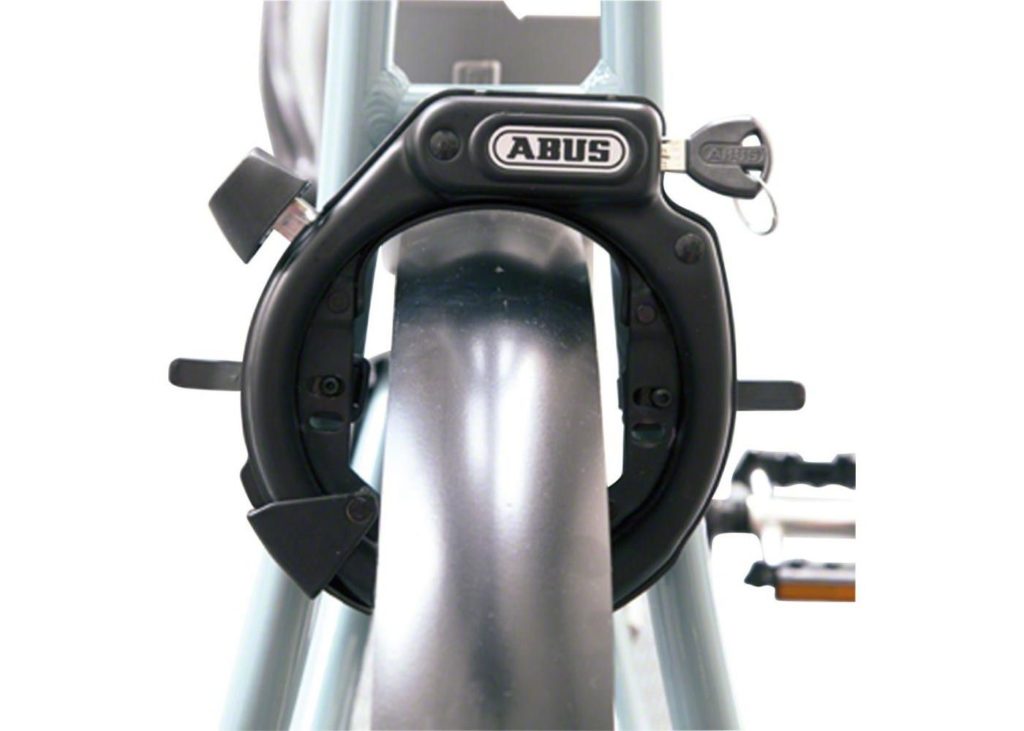
Frame locks are quick and convenient but only really useful if your bike is within sight
Lock in a Safe Place and Lock Safely
Where
It’s not just about getting the right lock setup – you have to use it wisely!
The most basic rule is to look for something totally immovable that can’t be cut into easily, so larger diameter metal poles and bars on cycle parking stands are obviously ideal but if they aren’t available there may well be other suitable street furniture.
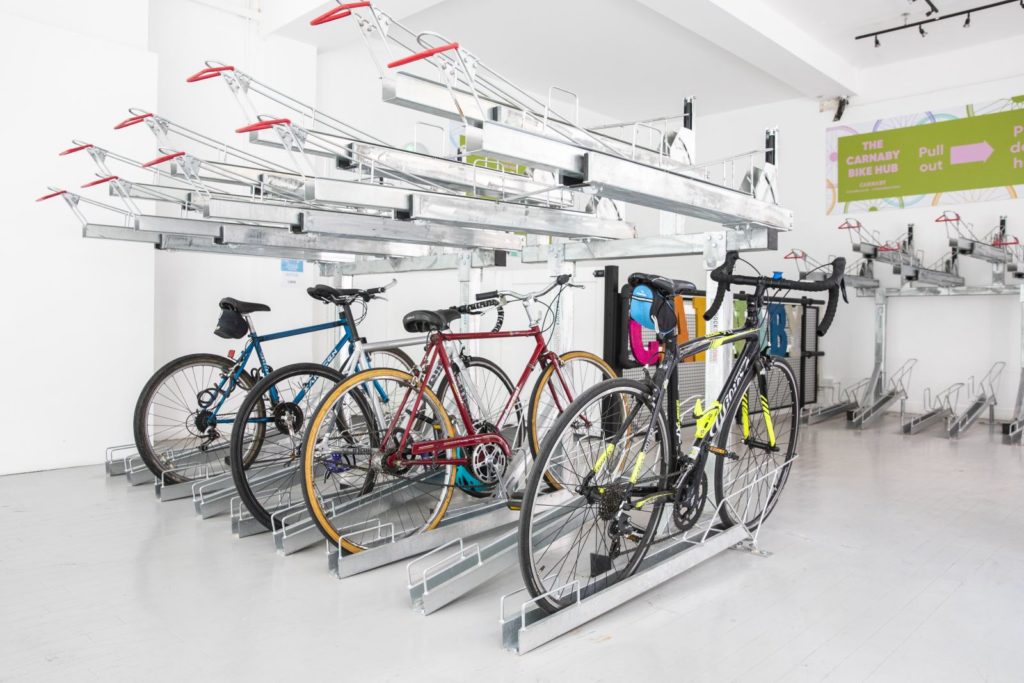
Indoor secure parking is one of the best options of all
Try and avoid parking in quiet areas and areas not covered by CCTV. Busy, well-lit areas with plenty of footfall are a good idea if possible.
By this, I mean a busy, well-lit location covered by CCTV, with lots of footfall. You might even be lucky enough to have a monitored indoor bike park in your area like the free one in Carnaby Street London.
How to lock your bike
We’ve already covered the importance of using two locks, especially for very expensive e-bikes. When locking to an object it’s also about making access to the lock as hard as possible for a potential thief who has come with professional lock breaking tools.
Firstly, lock at the lowest point possible between bike frame and locking object or cycle stand. This makes access and leverage points harder for thieves equipped with
Secondly, leave as little space as possible around the lock/s. Coil chains so that no slack is left – tight chains are harder to break. With D-locks make sure as much of the space within the shackle of the lock is occupied by bike and locking object as possible so that a potential thief has less space there to put any levering tool.
If you have only one lock, if possible lock through the frame of the bike, locking object and back wheel through your back wheel. Ideally locking through the front wheel as well is advised by use of a lengthy chain lock or with a two lock system.
Here’s a recap courtesy of the Ontario Police:
Just about any bike lock can be removed with the right tools and enough time – it’s all about making the prospect of attempting to steal your e-bike as unattractive as possible to a potential thief so it’s just not worth the risk. The better and more securely locked an e-bike and the brighter and busier the area the better. To see how these principles actually work in practice check out this instructive video which simulates attacks from a professional thief on a range of locks:

ABUS wants you to have one key for all the locks on your e-bike
An interesting footnote to this section is that ABUS have recognized that having one key for your all your e-bike functions – battery, frame lock and main lock – would be a welcome step to simplifying your life and so have introduced YourPlus which helps you do just that. If you buy an e-bike with this system you can buy extra ABUS locks and use the same key – make a note of your key number or visit your local bicycle dealer with your code card and you will be able to order a compatible lock.
Most bike locks come with at least two keys but note several lock manufacturers run key registration schemes like this one from Kryptonite that means you can get replacement keys or code for lost keys and forgotten combination codes. It could save you the price of a new lock one day!
Make Recovery As Easy as Possible
Should the worst come to the worst and your e-bike is stolen then you want to make sure you have done everything possible to get it back. Most basic is to have a record of the frame number and some pics to provide law enforcement and bike theft notification sites with.
You might also want to consider using a bike marking and registration service like the UK’s Bikeregister especially as the fact it is marked can be advertised on the frame and so may act as a potential deterrent to potential thieves.
GPX Bikes
A small number of e-bikes have integrated GPS units so that tracking may be possible in the event the bike is stolen. Van Moof is one of the best known examples. Their new X3 and S3 city bikes house a ‘Smart Cartridge ‘in the top tube hosting the computer, GSM and Bluetooth theft tracking components.

The latest generation of Van Moof e-bikes include GPS tracking
In the event the e-bike is reported stolen it starts sending coordinates that are added to an active to show the recorded location. In the meantime, all electronic functions, except for the tracking system, are shut down to save energy. This tracking system uses GSM cellular information called LBS that allows Van Moof to track the bike wherever it is, even inside a building. Van Moof say ‘For the last mile of tracking, we use another custom technology to pinpoint your bike’s exact location.’
To get the best service you need to sign up to Van Moof’s Peace of Mind Theft Deterrence scheme which means ‘an ironclad guarantee that we’ll recover your bike in the event it gets stolen. When you report your bike stolen in the VanMoof app, we alert our ruthless Bike Hunter team to track it down. If we can’t recover it for you within two weeks, we’ll replace it with a bike of the same (or better) age and condition.’
Of course, home security and insurance are also important areas and we will be covering those in a future post. But for now, stay tuned for more e-bike news and reviews and thanks for reading!
-Rich
Reader Interactions
Comments
Trackbacks
-
[…] of course you don’t want your bike to be stolen so of course the first line of defence is a good lock and good home security. If you live in a property with no secure outside storage folding and […]



A useful description of the range of locks, but perhaps overlooking the weakness of all of them. Accomplished thieves can cut most locks in less than a minute. Even in daylight on a busy street a bag can conceal tools while the thief appears only to be fumbling with something. The best route to avoiding theft is not to leave your bike unattended – which is one of the advantages of owning a bike that folds small enough to go wherever you go.
While registering your bike may not stop it getting pinched, -if the registration is visible it might deter some one from even considering your bike, and you may be able to recover it faster or at all.
Registration systems like Project 529 are worth a look at:
https://project529.com/garage
I’m a fan of the Otto locks, check them out. Their strongest offering would fit under the “secondary” class above.
Also, in Australia, we use BikeVault as a free and useful bike registration system. Worth promoting.
The closer the bike rack or post is to the street the more likely it will be stolen. At the university at Davis a flat bed truck and some fellows lifted an entire bike rack and put it on the bed and sped off. After that the racks were moved further from the street. The advantage of a folding bike for commuting is that you can take the bike inside where it will be out of sight of thieves. Bike lockers which were popular 40 years ago but have largely disappeared but also work very well as the bike is out of sight and it is much more difficult to break into the locker.
LOL, looks it happened in Rio de Janeiro- Brazil